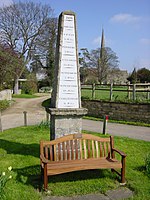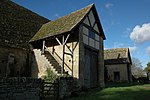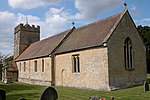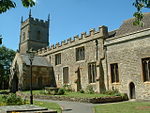Twyning is a village and civil parish on the River Avon in the north of Gloucestershire, near Tewkesbury, England. The parish is first mentioned in the Liber Wigorniensis in about 1016, where it is called Tuinaeum, part of Gretestane in the county of Winchcombeshire and then mentioned in Domesday Book, described as "Tu(e)ninge, Kings Land : Winchcombe Abbey." The name derives from the Old English for "between the rivers"; despite its spelling, it is pronounced "twinning". The parish forms a land 'isthmus' into the county of Worcestershire.
The village is divided into two main parts, the older "Churchend", and "Twyning Green". In addition, within the parish are the hamlets of Shuthonger which straddles the A38, Woodend, Hillend and Stratford Bridge on the border with Worcestershire. It has two pubs, The Fleet at Twyning by the river and the Village Inn overlooking the village green. Boats have traditionally ferried people up the river Avon from Tewkesbury to enjoy the Fleet's hospitality. The service operates during summer months. The parish contains large amounts of common land including Brockeridge Common, and extensive meadows bordering the River Avon.
There is also a Spar shop which houses a post office, and a primary school of approximately 150 pupils. There are still a number of original black and white Tudor houses.
There is recreation complex called TRAC, that contains a park, three tennis courts, a 5-a-side football pitch and a pavilion. The village is fortunate to escape the floods that regularly blight this area, as it is situated on a slope up from the river. However, some properties (especially the riverside Fleet Inn) were affected in the great flood of 2007. The village is surrounded by fishing lakes and various places on the river for anglers.









